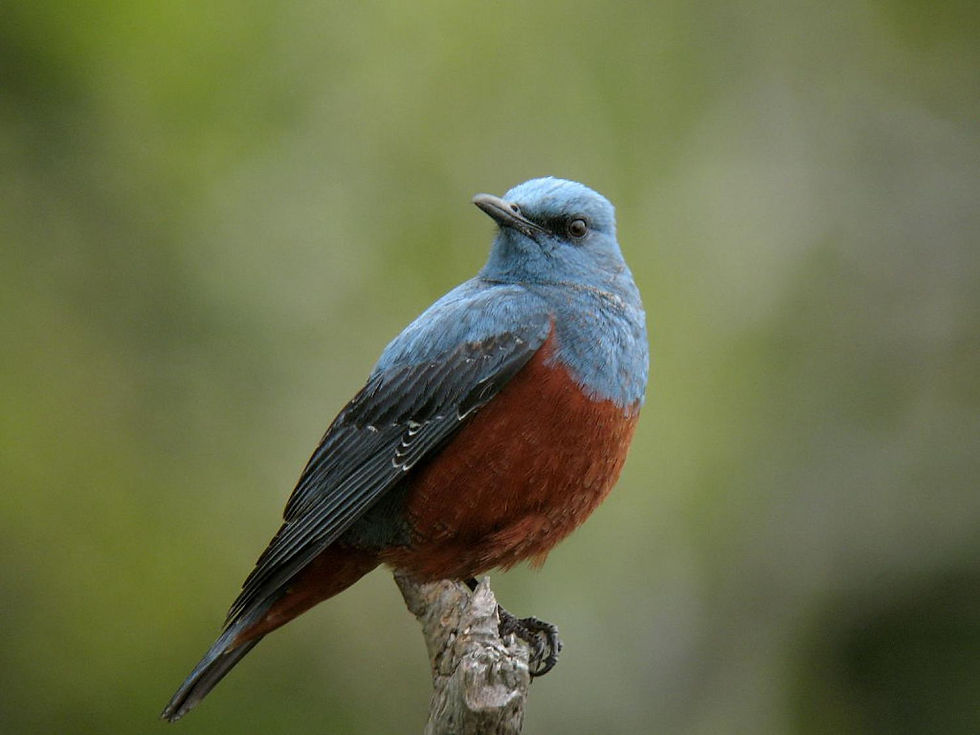Rare Blue Rock Thrush Sighting in Oregon: A Milestone for Ornithology and Amateur Birdwatchers
- morpheysam
- May 17, 2024
- 2 min read

In a remarkable event that has captivated bird enthusiasts and scientists alike, an amateur photographer recently captured a rare sighting of a blue rock thrush in Oregon. This is the first documented presence of this species in North America since 1997, marking a significant milestone in ornithology. Such vagrant bird sightings are crucial as they can unveil new mi
gration patterns and expand our understanding of bird distributions.
A Rare Visitor from Afar
The blue rock thrush, typically found in parts of Europe, Africa, and Asia, is an unusual visitor to North America. The bird spotted in Oregon is believed to belong to the Southeast Asian subspecies, distinguished by its reddish-brown belly feathers. Identifying the subspecies is vital as it helps pinpoint the bird's geographic origin, providing insights into its long journey.
Theories of Migration and Accidental Travel
Experts suggest that the blue rock thrush likely got blown off course during its migration from Asia, possibly aided by hitching a ride on a cargo ship. Such occurrences are not unheard of and vagrant bird sightings often prompt intriguing theories about how birds reach new territories. These insights can significantly contribute to our understanding of migration routes and mechanisms.
A Second Sighting: Deepening the Mystery
Adding to the excitement and mystery, there was another sighting of the same subspecies about 500 miles south, near San Francisco, shortly after the Oregon sighting. It remains unclear whether this is the same bird or a second individual. The proximity of these sightings deepens the intrigue, offering a unique opportunity to study how vagrant birds might navigate to and settle in new regions.
The Role of Amateur Birdwatchers in Scientific Discovery
The sightings have generated considerable excitement within the birding community, highlighting the blue rock thrush's rarity in North America. This event underscores the significant contributions amateur nature enthusiasts and photographers can make to scientific knowledge. Their observations can lead to important discoveries and enrich our understanding of wildlife.
Conclusion
The rare sighting of the blue rock thrush in Oregon not only expands our understanding of bird distributions and migration but also demonstrates the valuable role that amateur observers play in ornithology. The subsequent sighting near San Francisco adds an element of scientific intrigue, prompting further investigation into the bird's journey. This event is a testament to how amateur efforts can lead to meaningful contributions in the field of birding and beyond.
In summary, the unexpected appearance of the blue rock thrush in North America offers a fascinating glimpse into avian vagrancy and migration, while also celebrating the vital role of amateur birdwatchers in advancing scientific knowledge.



Comments